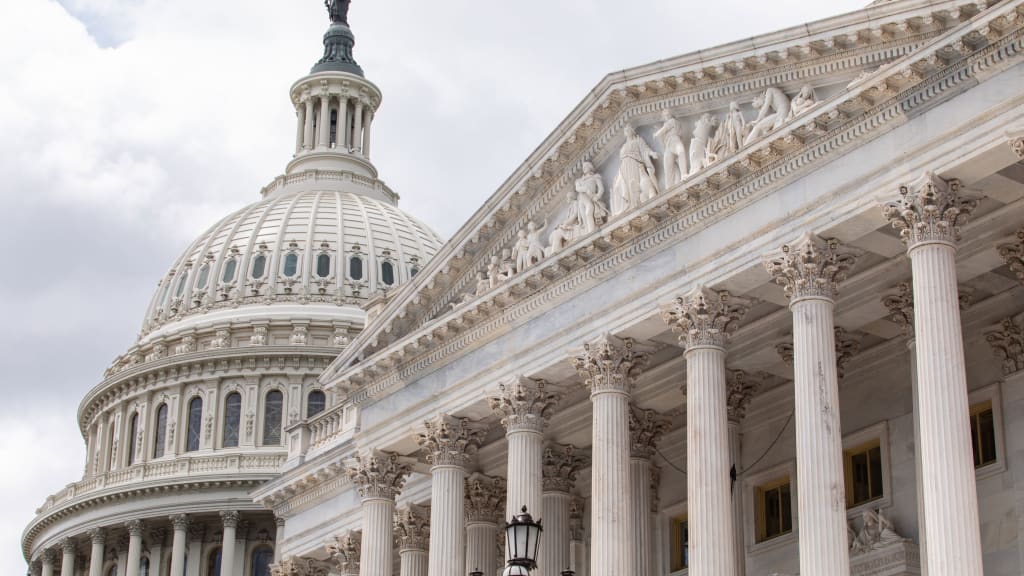With the Democrats’ $437 billion local weather and tax bundle poised for passage, companies could wish to give some extra thought to the second a part of that description: taxes.
In a Friday vote, the Inflation Discount Act (IRA) handed the Home of Representatives alongside get together strains. The laws, which already handed the Senate and now makes its technique to President Biden for a signature, goals to clamp down on report excessive inflation by lowering the federal deficit and decreasing drug costs, whereas additionally making a sprawling $369 billion funding in clear power. It is the most important funding in heading off local weather change to this point. Taxes on wealthier people and enormous companies, together with a reform on prescription drug pricing, will largely fund the regulation.
Notably, lawmakers declare the IRA doesn’t elevate taxes on small companies. However that does not imply that entrepreneurs are unaffected by the regulation. Here is some key adjustments to look out for.
A Stronger IRS
The Inner Income Companies will get an $80 billion increase beneath the IRA, as greater than half of that chunk will go towards enforcement, largely in an effort to shut the distinction between taxes owed and the quantity of taxes the federal government collects. That hole is believed to whole $600 billion per yr, in keeping with the U.S. Treasury Division. The IRS estimates that people are the most important offender behind the tax hole, fairly than companies, in keeping with an evaluation of IRS information from 2011 to 2013.
The funding is anticipated to improve the IRS’ lagging technological capabilities, which might assist the company shut the tax hole because it ramps up enforcement. Although this elevated authority goals to make the tax system simpler, consultants say that it’s going to improve audits as effectively. Those who do see unpaid taxes clawed again will possible face penalty charges as effectively.
Companies ought to get proactive by hanging onto paperwork past their conventional tax kinds, in keeping with Wendy Walker, an answer principal of the Wilmington, Massachusetts-based tax platform Sovos. That is as a result of enterprise tax filings, by design, have a tendency to not be complete, so it is a good suggestion to carry onto chargeback information, refund information and voided transactions and keep an effort to remain organized. “Companies want to have the ability to reconcile between the 1099-Okay type quantity that is reported versus what they’re really reporting as earnings on their tax return,” Walker says.
Inventory buyback excise tax
A former model of the regulation took goal on the non-public fairness trade in an try to shut the so-called carried curiosity tax loophole. Nevertheless within the newest model of the invoice, that line merchandise was supplanted with a one p.c price on inventory buybacks. Such a tax would kick in if a publicly-traded firm repurchases its personal inventory to extend the worth of remaining shares available on the market.
Whereas that clearly appears to have an effect on solely publicly traded corporations, one stakeholder stays in danger: staff. Robert Kimball, a companion on the Houston, Texas-based regulation agency Vinson & Elkins factors out that the tax could harm staff by penalizing the advantages of inventory repurchases.
The tax might probably ding entry to capital, too, says Jennifer Blouin, an accounting professor at Wharton. “A lot of entrepreneurs are getting seed cash or investments from massive public corporations, then impulsively that capital simply turned somewhat bit costlier.”
Extra loss limitation
Limitations to the quantity of losses a enterprise can write off will get a two-year extension. The supply, referred to as Limitation on Extra Enterprise Losses, was first licensed beneath the 2017 Tax Cuts and Jobs Act, which Donald Trump signed into regulation. It was set to run out in 2026. The limitation impacts pass-through corporations, or entities that do not face company earnings taxes and as an alternative, report their earnings onto their homeowners’ tax returns.
The cap presently limits the quantity of losses {that a} companies can attempt to offset with their earnings: the edge in 2022 is $270,000, or $540,000 for joint returns. The supply, which had already been prolonged for one yr beneath the American Rescue Plan Act, is ready to sundown in 2028 beneath the IRA.
So what does this prolonged limitation imply for you? It could take longer for some companies to recoup their losses, in keeping with Garrett Watson, a senior coverage analyst on the Tax Basis, a Washington, D.C.-based tax coverage assume tank. And Wharton’s Blouin says that within the long-term, the availability makes folks much less inclined to place capital at stake to take a danger and begin a brand new enterprise.
The e book tax
Giant American companies now face a 15 p.c minimal tax on their home income. That means that companies that generate north of $1 billion in earnings will face a minimal 15 p.c tax on all the income generated from U.S. shoppers stateside. Many Democrats reward the measure, claiming that companies aren’t taxed sufficient.
Proponents of the regulation say it ranges the taking part in subject between massive and small corporations. However the newest model of the e book tax goes a step past with bonus depreciation, a provision that cuts minimal tax payments for firms that go on an investing spree. The supply permits corporations to instantly subtract the price of new investments. Although the profit will part out between 2023 to 2026, it ought to encourage investments in modern expertise within the meantime, because it reduces the payback interval on capital expenditures.
A number of different areas to concentrate on embrace the next:
- Analysis and Growth: The analysis and growth tax credit score cap doubled to $500,000, which helps cowl bills for the small companies and entrepreneurs investing in R&D.
- Local weather Incentives: To encourage clear power investments, credit can be out there for individuals who use renewable power (assume photo voltaic panels) and make the most of power environment friendly buildings and retrofittings.






